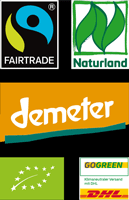- Coffee with
Putting an end to the empty phrase we really should. Or: How an idea grows and prospers.
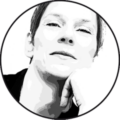
Barbara Beiertz
Today, I am having coffee with a woman, who had the courage and the perseverance to keep going at exactly this point and put her idea into practice: Jutta Nachtwey from Saatkultur*.
A non-profit project that combines anti-racism, humanitarian help, biodiversity, and design in a quite simple way: With small bags of organic seeds. From nine eatable plants, that originally come from various countries, but have become an ingredient that can be found in every kitchen today. All bags have been designed differently and beautifully and will be sold at the large eco farmers marked at Schloss Gottorf on May 15th. The proceeds will be donated to More Than Shelters**.
Or how Jutta describes it:
“The bags can be seen as analogue antihate postings, but the texts stand out from the abundance of messages by adding real seeds to the bags. That is an incentive to give the bags, and therefore the messages, away as a gift – transforming the digital “sharing” into an analogue one. Saatkultur* should not only enhance and strengthen the positive energies within the society, but further, going into the greenhouse and growing the seeds should encourage people to reflect on how each one of us can do something to fight against hatred.”
An idea that doesn’t only impress us content wise. But let’s start at the beginning…
B: Jutta, you are a journalist with a focus on ecology and design, you are writing for the Page, for the Original-Magazin in Austria, you published “Design Ecology” and other books – and now Saatkultur*. Why?
J: After what happened in Germany in 2015 – first the welcoming culture and then this outragoues hostility against foreigners -, I felt the need to get involved. I was horrified and had a hard time to identify with my own country. I thought: This can’t be true, there must be something that you can do.
Of course, you demonstrate, but you keep thinking that you must get involved much more. But it is hard to do that in your everyday life. You might help to sort clothes for refugees, which is good, but it would make much more sense to make use of my abilities, do something that I am really good at – for something that helps others.
Together we are much more useful.
J: This thought and also, that others might feel the same, but don’t know either how to put that into practice was the trigger: I must do something that combines the competences of different people, who can participate from their regular workplaces. Not having to go places, not having to make big changes in their lives, just keep on doing what they are doing. And when we are doing this all together, and no one is earning a penny with it, we create something that others can profit from.
The seed-metaphor? Coincidence always plays a role. I actually always had little bags of seeds lying on my digital screen and I found “seeds” so simple and convincing – they don’t need much explanation. And in addition, the idea emerged to use the back of the bag for short texts about inclusion projects and to combine that with digital features to raise attention for these initiatives.
I had had that idea for quite a while, and then the contact to More Than Shelters** developed, who are active in crisis regions and refugee camps. We had a good connection, because the founder Daniel Kerber was originally an artist, who had dealt with the informal architecture in refugee camps and slums worldwide. But when he realized that his installations were “only” seen by culture lovers, who strolled through museums, he started developing something that actually helps on site: Tent systems. This change, shifting into another field, while actually keep doing what you did before – that is totally convincing. Naturally, he quickly showed understanding for my project.
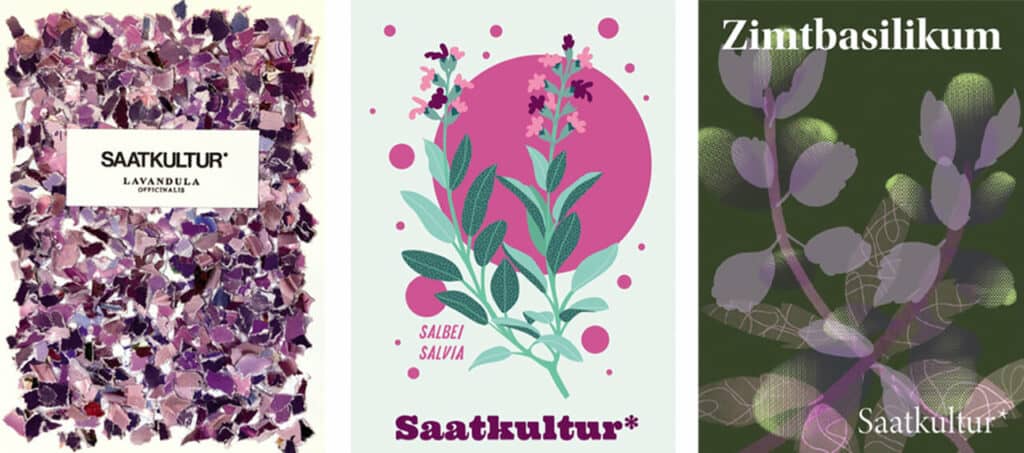
B: But why did you have the bags designed by designers – and why specifically by these?
J: Well, it is part of my job as a design journalist to look out for good visual solutions. Because of that I know a lot of designers, who I knew would like to get involved. But the longer I thought about choosing people from as many different cultural areas as possible, the more I realized that the biography of each one of them could also contribute to the project. And that is why I tried to choose the people by their personal story.
B: How did you manage to reconcile all of them? How long did you work on that?
J: Winning the people over did not take long, only a few months. Finding out which stories are interesting took much longer. The personal biographies played a role – or also, if racism was a topic they had been dealing with in their work. Convincing them was actually quite easy, because they quickly understood the double metaphor of the real and the social seeds. Corona got in our way and the Gottorfer Landmarkt could not take place in 2020 and 2021. But this year it is going to work out.
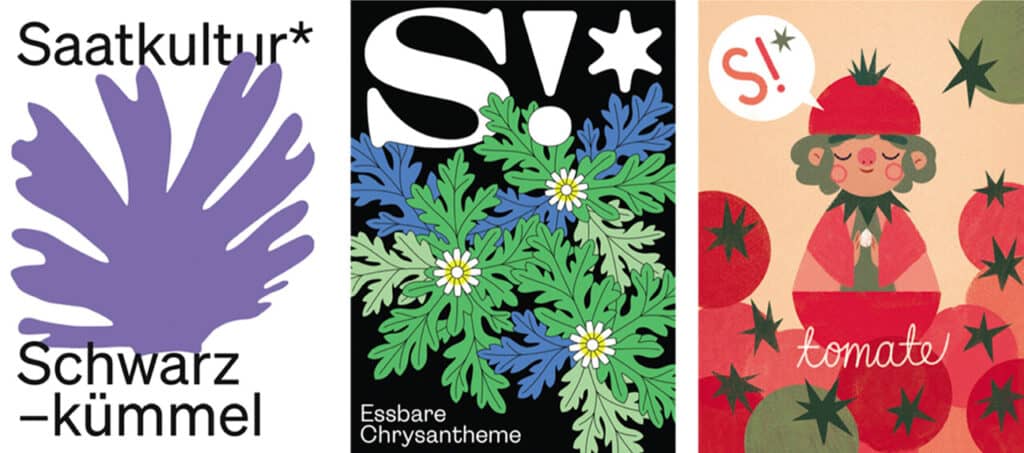
B: Then you built the website as an extension. But, if I got it right, the only possibility to buy the little bags will be at the Gottdorfer Landmarkt on May 15th?
J: Until now, yes. We wanted to see how much we sell, but we will very likely start selling them online.
B: Do you want to continue the project?
J: The topic will accompany us all for much longer – the ecological one as well as the migration topic – and you could definitely play it further. But that actually depends on finding partners who are willing to finance it. So far, all of us have been working voluntarily, which was good to get everyone on board. But I can’t keep doing this on the side, we have to set it up differently.
B: What would the optimal sponsor look like, if you could wish for anything?
J: Of course, it can’t be a fig leaf project or greenwashing. That really is a difficult question, that I haven’t fully answered for myself yet, since this project exists in a kind of interspace.
Cleary, it would be handed on a silver platter for any kind of seed-company, but it doesn’t necessarily have to be that. Because content wise it deals with social matters – in principle, it is an interesting topic for any kind of company. I think, the content is relevant for all companies nowadays and has the potential to be further developed.
B: It should have some kind of ecological component, though?
J: Yes, but today every commercial company needs to address the topic sustainability – with everything they are doing: During their production processes, when furnishing their offices spaces and so on. No company can ignore the topic ecology anymore, that’s why it is not that determined.
B: That is true! But it appears that most of the companies, often don’t know how to get started. As long as sustainability is not embedded in their company strategy, I believe it is not going to work. But who knows, maybe we can figure it out.
Courage means confidence.
B: I told you that we are dealing with the topic courage. In terms of: To get yourself going, to inspire, or to work based on an inspiration. What does courage mean to you?
J: Courage, well… (she laughs) In any case, I believe, it means to explore interspaces. Having the courage to do something that does not belong to one or the other category. I believe such interspaces have an enormous potential and you “just” have to have the courage to enter them. And to put it into practice. Despite all difficulties that make you feel like you have no idea where to begin. Do you start by asking the designers? They would say yes right away, but you can’t ask them, because you don’t know if you find a location where you can sell it. So, you need to start by finding a location. But you can’t because you do not know if the designers will say yes…. And so on.
Saatkultur* is a project that had so many potential starting points, so you just have to have the courage to say: Alright. I am just going to start somewhere and I strongly believe that once I have laid a foundation I will we able to build on that. Courage means being confident and believing that something is feasible.
Connecting strengthens.
B: What would you say? Does it need a specific human quality to be courageous? Why are some people courageous and others are not?
J: That’s a difficult question. I would not describe myself as courageous, for example. But I have found something now, that allows me to bring in all of my confidence and experience. But no, I am not necessarily a courageous person. I am also not a totally confident person who thinks “Wow, I have so many genius ideas.” Quite the contrary, actually. I question a lot of things. But that can also help a person to be courageous. By repeatedly questioning what you are doing, you consolidate more and more what the idea is, that you want to pursue.
But I also believe, that by interweaving different aspects of your own life – for me that is culture, design, sustainability, writing – a kind of strength can develop. Yet, I also have to say, this project is absolute team effort. You are speaking with me, because I am the one with the idea of the seeds with the double meaning, but beyond that it is an absolute team project.
Only because of the collaboration of many different people and disciplines the project could develop. For example, I contacted a befriended biologist and asked if he could take care of the plant specific texts. So now, the texts are not some plant-half-knowledge I gathered up on google, but an expert describes the origin of the plant. Ideas are strengthened if you connect the right competences.
A little bag as a red thread.
B: Which effects do you think, or do you hope Saatkultur * will have?
J: Because of the little bags, the design, the content, and the stories it has various entry points. It allows to reach all kinds of different people, for example also people who just want to grow their tomatoes and that’s it. They don’t care about the rest. They look at the back of the bag, read some sentences and at best they think “Okay, I want to know more about this”. Then, they can visit the website and come upon all these topics they did not expect.
It is easy to understand, that these plants spread everywhere over thousands of years – no one would get the idea to say, “Hey tomato, stay in Mexico, there is no place for you here.” They came to Europe from Mexico in the 16th century and we can’t imagine not having them nowadays. That is quite easy to understand and that way it might become easier to also draw the analogy.
The projects, that we present on the little seed bags, also address people with different interests: Design, craftwork, art, dancing, music – fields, in which creativity always plays a role. Creativity is a connecting element between cultures.
We hope that some people start approaching the topic differently. And for those, who are already interested in the topic it is like a long “article about integration projects”, that way, you get to know different approaches.
The little bag serves as a red thread, because from there you get to all three levels. Either you just care about the plants, or about the designer and you can read their biography, or about the integration projects. The bag of seeds is the connecting element between the three levels.
And what was very important to me: The very open design concept – the designers were not given any specifications, except for the little star – that also reflects diversity. I did not want to be the European who specifies: “Alright guys, you have to do exactly what I say.” No, I wanted the project to be based on diversity from the very beginning.
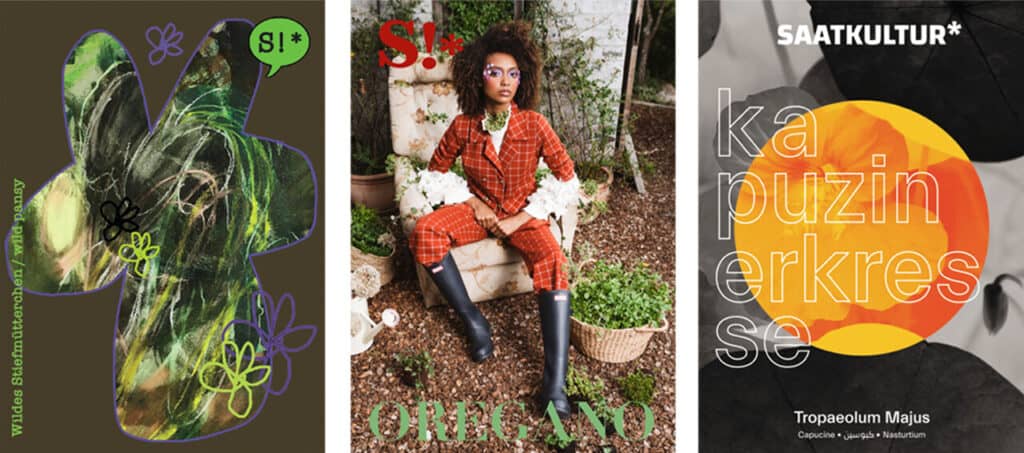
B: There must be a gallery that would exhibit the designs…
J: That is what I meant earlier: The most obvious are the seeds, but it is also about the design itself – of course that would be interesting for a gallery. There are different ways of approaching this. By the way, the biographies of the designers are also impressive. In parts, I had no idea how genius their stories fit into this concept.
For example, Mario Lombardo. He was born in Argentina and fled to Germany with his parents from the military dictatorship. Then, because some ancestors of his were Italian, they were able to get the Italian citizenship. Yet, he grew up in Germany, always with a feeling of not knowing where he belongs. He worked at Spex as an Art Director, but he never stopped asking himself where home is for him. When he went back to Argentina for the first time, he arrived (he also talks about that on the Saatkultur* Website) and even though it smelled like kerosine at the airport, he noticed something and knew: This is the smell of home. That had such an effect on him, that meanwhile he has started his own little perfume label. Because he realized how much human emotions can be triggered by scents.
B: Which is definitely true: For us, the smell of coffee means home. And supposedly there are real estate agents who make sure that the apartments smell like coffee to make them more attractive.
J: Yes, you directly associate it with relaxation.
B: Or with such inspiring conversations like this one with you.
Thank you so much for that.
** “Since 2012, MTS has built up and consolidated innovations in the humanitarian context in a variety of projects with UN organizations and international aid organizations. For a long time, MORE THAN SHELTERS was the only area of work at MTS and consequently formed much of the national and international work today.”
(www.mts-socialdesign.com/more-than-shelters)
If you want to find out more about Saatkultur* or the other projects:
saatkultur.org/
saatkultur.org/spenden/
www.mts-socialdesign.com/more-than-shelters
meine-kunsthandwerker-termine.de/de/veranstaltung/gottorfer-landmarkt

